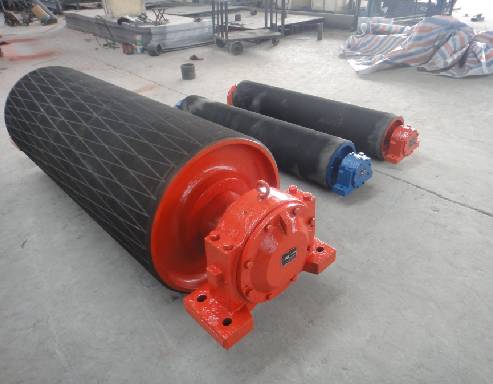 Afrikaans
Afrikaans  Albanian
Albanian  Amharic
Amharic  Arabic
Arabic  Armenian
Armenian  Azerbaijani
Azerbaijani  Basque
Basque  Belarusian
Belarusian  Bengali
Bengali  Bosnian
Bosnian  Bulgarian
Bulgarian  Catalan
Catalan  Cebuano
Cebuano  Corsican
Corsican  Croatian
Croatian  Czech
Czech  Danish
Danish  Dutch
Dutch  English
English  Esperanto
Esperanto  Estonian
Estonian  Finnish
Finnish  French
French  Frisian
Frisian  Galician
Galician  Georgian
Georgian  German
German  Greek
Greek  Gujarati
Gujarati  Haitian Creole
Haitian Creole  hausa
hausa  hawaiian
hawaiian  Hebrew
Hebrew  Hindi
Hindi  Miao
Miao  Hungarian
Hungarian  Icelandic
Icelandic  igbo
igbo  Indonesian
Indonesian  irish
irish  Italian
Italian  Japanese
Japanese  Javanese
Javanese  Kannada
Kannada  kazakh
kazakh  Khmer
Khmer  Rwandese
Rwandese  Korean
Korean  Kurdish
Kurdish  Kyrgyz
Kyrgyz  Lao
Lao  Latin
Latin  Latvian
Latvian  Lithuanian
Lithuanian  Luxembourgish
Luxembourgish  Macedonian
Macedonian  Malgashi
Malgashi  Malay
Malay  Malayalam
Malayalam  Maltese
Maltese  Maori
Maori  Marathi
Marathi  Mongolian
Mongolian  Myanmar
Myanmar  Nepali
Nepali  Norwegian
Norwegian  Norwegian
Norwegian  Occitan
Occitan  Pashto
Pashto  Persian
Persian  Polish
Polish  Portuguese
Portuguese  Punjabi
Punjabi  Romanian
Romanian  Russian
Russian  Samoan
Samoan  Scottish Gaelic
Scottish Gaelic  Serbian
Serbian  Sesotho
Sesotho  Shona
Shona  Sindhi
Sindhi  Sinhala
Sinhala  Slovak
Slovak  Slovenian
Slovenian  Somali
Somali  Spanish
Spanish  Sundanese
Sundanese  Swahili
Swahili  Swedish
Swedish  Tagalog
Tagalog  Tajik
Tajik  Tamil
Tamil  Tatar
Tatar  Telugu
Telugu  Thai
Thai  Turkish
Turkish  Turkmen
Turkmen  Ukrainian
Ukrainian  Urdu
Urdu  Uighur
Uighur  Uzbek
Uzbek  Vietnamese
Vietnamese  Welsh
Welsh  Bantu
Bantu  Yiddish
Yiddish  Yoruba
Yoruba  Zulu
Zulu conveyor belt guide rollers
Understanding Conveyor Belt Guide Rollers Essential Components for Efficient Material Handling
Conveyor systems are integral to modern manufacturing, logistics, and distribution operations. They simplify the transportation of materials, maximizing efficiency and productivity. One vital component of these systems is the conveyor belt guide roller, which plays a crucial role in ensuring the smooth operation of conveyor belts.
What are Conveyor Belt Guide Rollers?
Conveyor belt guide rollers are cylindrical devices that facilitate the proper alignment and movement of conveyor belts. These rollers help to maintain the belt's trajectory, preventing it from slipping off the track or misaligning during operation. Guide rollers are strategically placed along the conveyor’s path and are designed to support the belt's edges, providing stability and reducing wear and tear on both the belt and the conveyor system itself.
Importance of Guide Rollers
1. Belt Alignment One of the primary functions of guide rollers is to ensure proper alignment of the conveyor belt. A misaligned belt can lead to numerous operational problems, including increased friction, uneven wear, and even damage to the belt. By providing a guiding pathway, these rollers help maintain the belt on its intended course.
2. Reduced Wear and Tear Conveyor belts undergo significant stress during operation. Guide rollers minimize unnecessary friction and contact areas, which reduces the wear and tear on the belt and the overall system. This is crucial for maintaining the longevity of the conveyor equipment and minimizing downtime due to repairs or replacements.
3. Efficiency and Productivity A properly aligned and functioning conveyor belt system ensures the seamless flow of materials. This efficiency directly correlates with productivity—reducing the time and labor required for material handling. When guide rollers function correctly, the entire conveyor system operates more smoothly, enabling faster and more reliable service.
4. Safety Misaligned conveyor belts not only pose operational challenges but also safety risks. A belt that slips or derails can cause material spills and potential hazards for personnel working in the vicinity. Guide rollers help maintain belt integrity, which translates to a safer working environment.
Types of Guide Rollers
Guide rollers come in various designs and materials, tailored to specific applications and environments. Common types include
- Standard Guide Rollers Often made of steel or polyurethane, these rollers are designed for general applications and can handle a variety of loads.
conveyor belt guide rollers

- Heavy-Duty Guide Rollers Designed for high-capacity conveyor systems, heavy-duty rollers are constructed to withstand greater stresses and are usually made from reinforced materials
.- Adjustable Guide Rollers These rollers can be adjusted for different belt widths and configurations, providing versatility for systems that may undergo changes over time.
- Specialized Guide Rollers For unique applications—such as those involving extreme temperatures, chemicals, or harsh conditions—specialized rollers made from specific materials or with unique designs are employed.
Maintenance of Guide Rollers
To maximize the lifespan and functionality of conveyor belt guide rollers, regular maintenance is essential. This includes
- Inspection Routinely check for signs of wear, misalignment, or damage. Prompt identification of issues can prevent larger problems down the line.
- Cleaning Keep rollers free from debris and contaminants that can cause friction or impede performance.
- Lubrication Ensure that any moving parts are adequately lubricated to reduce wear and improve operational efficiency.
- Replacement When wear or damage is too extensive, replacing guide rollers promptly will help maintain both safety and system performance.
Conclusion
In conclusion, conveyor belt guide rollers are vital components that contribute significantly to the functionality and efficiency of conveyor systems. Their roles in aligning the belt, reducing wear, enhancing safety, and ultimately improving productivity underscore their importance in material handling operations. Investing in high-quality guide rollers and maintaining them properly can lead to improved performance and longevity of conveyor systems, ensuring sustained efficiency in operations. Understanding these components can help businesses optimize their logistics and manufacturing processes, driving success in an increasingly competitive market.
-
Revolutionizing Conveyor Reliability with Advanced Rubber Lagging PulleysNewsJul.22,2025
-
Powering Precision and Durability with Expert Manufacturers of Conveyor ComponentsNewsJul.22,2025
-
Optimizing Conveyor Systems with Advanced Conveyor AccessoriesNewsJul.22,2025
-
Maximize Conveyor Efficiency with Quality Conveyor Idler PulleysNewsJul.22,2025
-
Future-Proof Your Conveyor System with High-Performance Polyurethane RollerNewsJul.22,2025
-
Driving Efficiency Forward with Quality Idlers and RollersNewsJul.22,2025





























